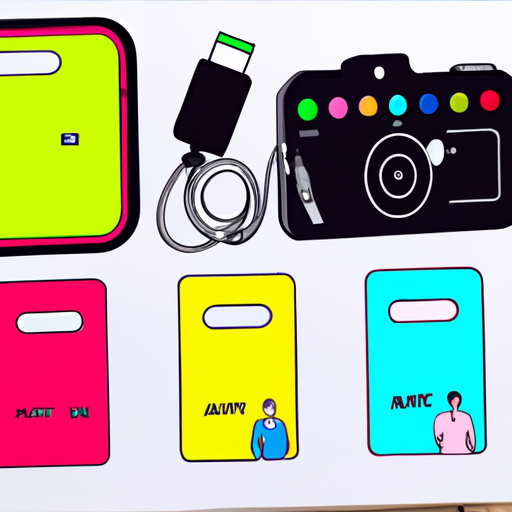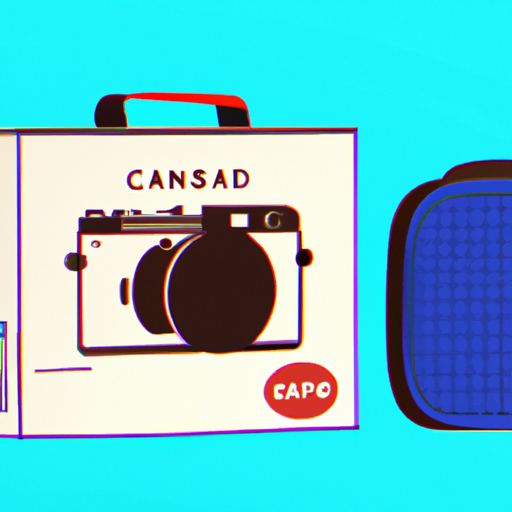
-
Table of Contents
- Package Design for Tech Accessories: Modern and Sleek
- The Power of Package Design
- Key Elements of Modern and Sleek Package Design
- 1. Minimalistic Design
- 2. High-Quality Materials
- 3. Innovative Structural Design
- 4. Consistent Branding
- Case Studies: Successful Package Designs for Tech Accessories
- 1. Apple AirPods
- 2. Google Pixel Buds
- 3. Bose QuietComfort Earbuds
- Conclusion
Package Design for Tech Accessories: Modern and Sleek

When it comes to tech accessories, package design plays a crucial role in attracting customers and creating a lasting impression. In today’s fast-paced and competitive market, a modern and sleek package design can make all the difference in capturing the attention of potential buyers. This article explores the importance of package design for tech accessories and provides valuable insights on how to create compelling and visually appealing packaging.
The Power of Package Design
Package design is not just about protecting the product; it is a powerful marketing tool that can significantly impact a consumer’s purchasing decision. In fact, studies have shown that 72% of consumers say that packaging design influences their buying choices. With the rise of e-commerce, where customers cannot physically touch or feel the product, the package design becomes even more critical as it serves as the first point of contact with the customer.
For tech accessories, which often have a sleek and modern aesthetic, the package design should reflect the same qualities. A well-designed package can convey the product’s features, quality, and brand identity, creating a positive perception in the minds of consumers.
Key Elements of Modern and Sleek Package Design
Creating a modern and sleek package design requires careful consideration of various elements. Let’s explore some key elements that can help achieve this aesthetic:
1. Minimalistic Design
Minimalism is a popular design trend that focuses on simplicity and clean lines. Applying this principle to package design can create a modern and sleek look. Minimalistic package designs often use a limited color palette, simple typography, and uncluttered layouts. This approach allows the product to take center stage and gives a sense of sophistication.
Example: Apple’s packaging for its AirPods Pro is a great example of minimalistic design. The white box with a high-quality product image and minimal text exudes elegance and simplicity.
2. High-Quality Materials
The choice of materials can greatly impact the perceived value of a product. Using high-quality materials for packaging can enhance the overall look and feel, giving a premium touch to the product. Tech accessories, such as headphones or smartphone cases, often have a sleek and premium design, and the packaging should reflect that same level of quality.
Example: Bang & Olufsen, a renowned audio brand, uses premium materials like matte black cardboard and soft-touch finishes for their packaging. This choice of materials elevates the perceived value of their products.
3. Innovative Structural Design
Creating a modern and sleek package design goes beyond aesthetics; it also involves innovative structural design. Unique and functional packaging structures can enhance the user experience and create a memorable unboxing moment. Tech accessories often have specific requirements for packaging, such as cable management or easy access to the product, which can be addressed through thoughtful structural design.
Example: The packaging for the Google Nest Mini features a cleverly designed structure that allows the user to easily remove the product while keeping the cables neatly organized. This innovative design adds value to the overall user experience.
4. Consistent Branding
Consistency in branding is crucial for creating a strong brand identity. The package design should align with the brand’s visual language, including the logo, color scheme, and typography. A cohesive brand identity across all touchpoints, including packaging, helps build brand recognition and trust among consumers.
Example: Samsung’s packaging for its Galaxy Buds Pro maintains a consistent visual identity with the use of their signature blue color, sleek typography, and the Samsung logo prominently displayed.
Case Studies: Successful Package Designs for Tech Accessories
Let’s take a look at some real-world examples of successful package designs for tech accessories:
1. Apple AirPods
Apple’s AirPods packaging is a prime example of modern and sleek design. The white box with a clean product image and minimal text perfectly aligns with Apple’s minimalist design philosophy. The package design not only protects the product but also creates a sense of anticipation and excitement for the user.
2. Google Pixel Buds
Google’s packaging for its Pixel Buds showcases a combination of minimalism and innovation. The sleek black box with a simple product image and the Google logo creates a premium look. The package design also incorporates a unique sliding mechanism that reveals the product, adding an element of surprise and delight for the user.
3. Bose QuietComfort Earbuds
Bose’s packaging for its QuietComfort Earbuds is a great example of using high-quality materials to create a premium feel. The matte black box with embossed branding and a soft-touch finish exudes elegance and sophistication. The package design reflects the premium nature of the product and enhances the overall unboxing experience.
Conclusion
Package design plays a crucial role in the success of tech accessories. A modern and sleek package design can attract customers, create a positive perception of the product, and enhance the overall user experience. By incorporating minimalistic design, high-quality materials, innovative structural design, and consistent branding, tech accessory brands can create compelling packaging that stands out in a crowded market.
Remember, package design is not just about aesthetics; it is a strategic tool that can influence consumer behavior and drive sales. Investing in thoughtful and visually appealing package design can be a game-changer for tech accessory brands looking to make a lasting impression on their target audience.
